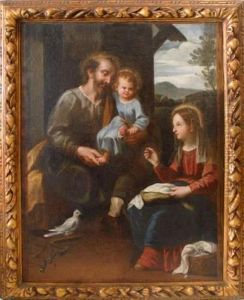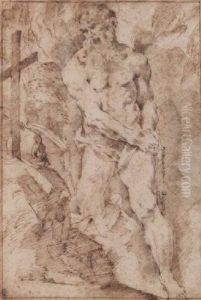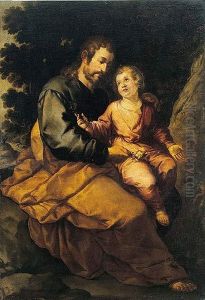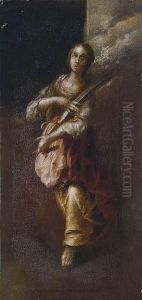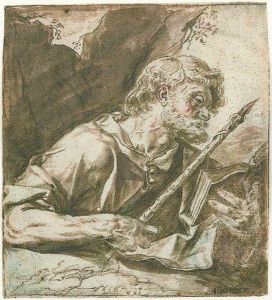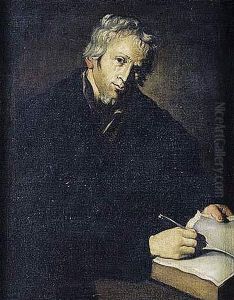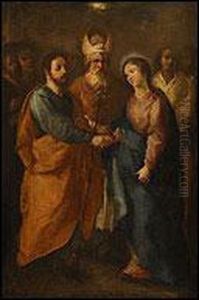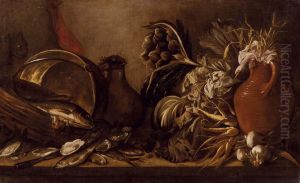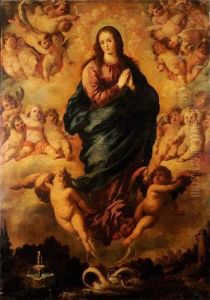Francisco El Viejo Herrera Paintings
Francisco Herrera the Elder, also known as Francisco El Viejo Herrera, was a pivotal figure in the development of Spanish Baroque painting. Born in Seville, Spain, in 1576, Herrera established a reputation for his dynamic style and became one of the most prominent painters of his time in Seville. His work is characterized by a robust, dramatic use of line and a preference for bold contrasts of light and shadow, often highlighting the intense emotional content of religious subjects.
Herrera's early training is not well-documented, but he was likely influenced by the naturalistic styles of the Sevillian school, which included artists such as Juan de las Roelas and Francisco Pacheco, the latter known for being the teacher of Diego Velázquez. Herrera's own style, however, diverged significantly from the more restrained manner of Pacheco's circle. He embraced a more vigorous and expressive approach that prefigured the work of the later Sevillian painters, including his son, Francisco Herrera the Younger, and Bartolomé Esteban Murillo.
Among his notable works are 'The Last Judgment' and 'The Holy Family', which showcase his ability to convey monumental figures with a sense of vitality and movement. His contributions to the design and execution of Seville's Corpus Christi procession decorations also indicate his role as an influential artist within the civic and religious life of the city.
Despite his success, Herrera was known to have a difficult personality, which led to confrontations with other artists and patrons. This temperament may have contributed to the departure of his talented son, Francisco Herrera the Younger, who left Seville to pursue his career in Madrid and later Rome. Francisco El Viejo Herrera continued to work in Seville until his death in 1656. His legacy lived on through the works of his son and the many artists who adopted aspects of his vigorous style into the burgeoning Spanish Baroque movement.
